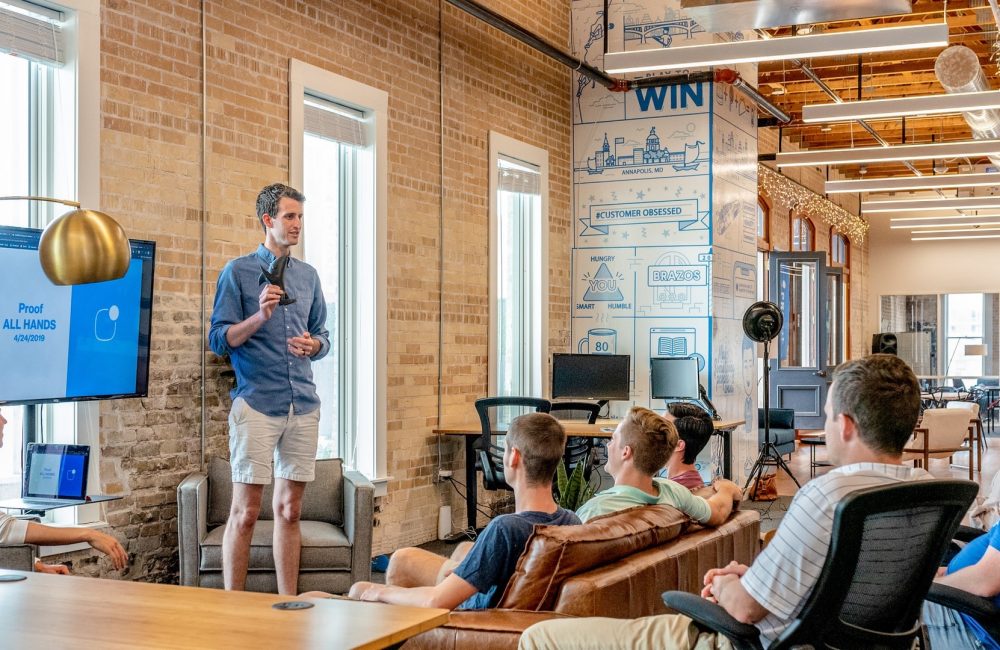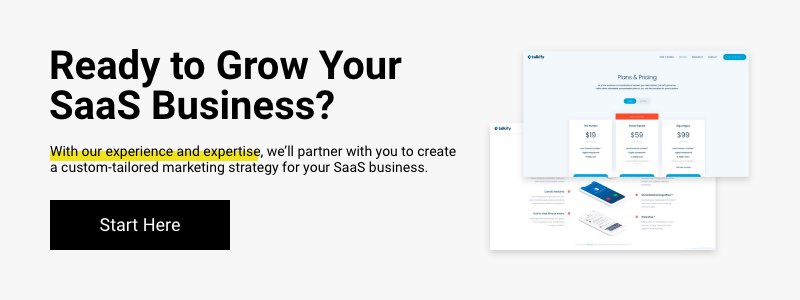What is SaaS Digital Marketing?
Software as a Service, otherwise known as SaaS, is a market that is rapidly growing. A SaaS company is an organization that uses software on the cloud to provide users with a service. For example, Microsoft Word is a software product that we all once purchased and uploaded onto our computers that now operates in the cloud as a SaaS solution. As these software products which were formerly bought for our hard drives continue to move to the cloud, the adoption of and spend on SaaS products advances quickly.
- The worldwide public cloud services growth was forecast at 17% in 2020 (gartner.com)
- In 2020, 73% of organizations claimed that no less than 80% of their apps were SaaS (based on a survey conducted by Better Cloud).
With an ever-increasing market, SaaS companies are presented with an exciting opportunity to establish themselves, as the world continues to move online.
But let’s say you’ve created a superior product and you are ready to claim your share of the market by implementing strategic SaaS industry marketing tactics. Your Saas product solves a real problem and not to mention you offer killer customer service (yes, that’s still a real thing that exists). And yes, it is true, the success of a SaaS product is heavily influenced by the user experience – the Saas engine is fueled by exceptional customer service and a superior product, those two factors make the Saas world go round. However, marketing a SaaS product presents distinct differences from marketing a typical b2c or b2b product. This article will explore those differences, and present some practical examples of how to properly market your SaaS company.
At the foundational level, marketing a SaaS product remains within the same path that all successful digital marketing campaigns exist; the customer acquisition journey. However, SaaS marketing has distinct differences that require specific adjustments in your marketing strategies and tactics in order to find and maintain loyal subscribers of your software.
How is SaaS Marketing Different
Lack of a Physical Product
Of the more apparent differences with marketing a SaaS product is the lack of a physical product or presence. The path to convincing someone to purchase a physical product is much more straightforward. SaaS products typically provide a specific solution to a not-so-general problem that most likely doesn’t make sense to the average consumer, even if they might end up being a perfect fit for your software. In other words, you are providing a solution to a problem that most people either don’t know there are solutions readily available (solution aware) or don’t even know they have a problem yet (problem aware).

Because of this challenge, the SaaS customer acquisition journey requires more emphasis on education, which makes the front end of the funnel much more detailed and lengthened. Identifying your target audience requires an intentional series of marketing assets that help your desired end-user become aware of their problem and your solution. This is why content marketing plays such an integral role in spreading the gospel of any good SaaS product.
SaaS Operations Heavily rely on ongoing subscriptions
Most b2c or b2b products and services are focused on the initial customer acquisition, or the purchase of their product. In contrast, SaaS offerings typically operate within a monthly subscription or membership model. SaaS products are presented with a unique challenge of first convincing prospects that this product solves an everyday problem and then convincing them that solving this problem is worth a monthly expense.
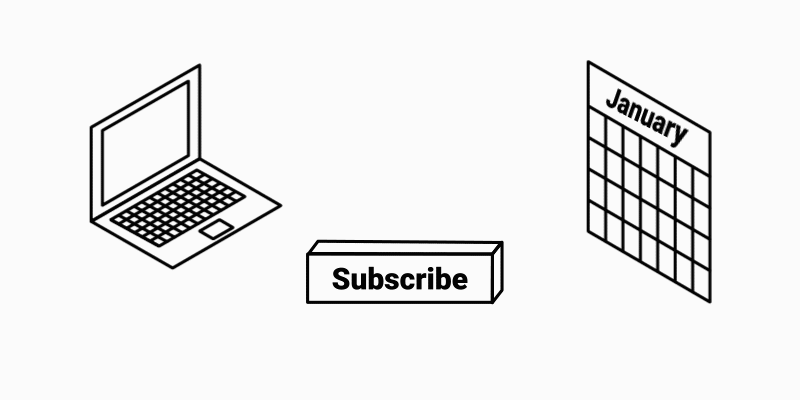
SaaS companies must turn their focus from customer acquisition to new lead ascension and the retention of current users. This is why, ultimately, the user experience is king in sustaining a SaaS product long term. Many SaaS products provide free versions of their product in order to prove to potential users that the SaaS product is useful in the everyday life of the ideal end-user.
Constant Change
What makes the above emphasis on new user ascension and current user retention so challenging is the rate at which users change the SaaS apps they are using. As the SaaS industry continues to expand and more and more SaaS products are coming to market with their own free trials to offer, the turnover rate of SaaS app usage continues to rise well above the industry average.

In Blissfully’s 2019 Annual SaaS Trends Report, the typical midsized company changed 39% of their SaaS apps between 2017-18. App turnover is a natural result of the expanding market, as new apps come with consolidated functionality and efficiency, which is quite enticing, considering the typical 200-501 person company operates with over 120 different SaaS apps at a time. This marketing challenge reinforces the importance of the bottom of the customer acquisition journey, ascension and retention. To avoid turnover, successful SaaS companies must continually refine their product to respond to the evolving problems of their clients, and continue providing superior customer service.
SaaS Product Customer Acquisition
What is Customer Acquisition Marketing?
Customer acquisition marketing is the process of guiding your ideal client along a virtual path all of your customers will take as they convert from strangers to loyal customers. Not all prospective customers enter into the journey at the same place along the path, but the path remains the same. The role of customer acquisition marketing is to have the content assets in place to help potential customers, wherever they may enter into the journey, naturally and logically move to the next stage of the journey. Sprout Social provides us with an example of what this might look like:
Let’s say you’re marketing an SEO tool. Some of your target audience may not even know what SEO is yet. Meanwhile, you might have customers at later stages of the funnel comparing your product to competing SEO tools and others who are ready for a trial.
The job of customer acquisition marketing is to make their journey to making a purchase decision as frictionless as possible.
What is the Customer Acquisition Process?
Broadly speaking, we split the customer acquisition process into three groups: Top of Funnel, Middle of Funnel, and Bottom of Funnel. The purpose of Top of Funnel is to generate awareness and spark engagement. In the middle of the marketing funnel, content assets should educate, entertain, and gain permission to speak one to one. At the bottom of the funnel, your content assets should aim to convert, and excite for the next purchase, or in the case of SaaS products, retain your client for the next month’s subscription. This process can take between 6 and 18 months for the average SaaS customer.
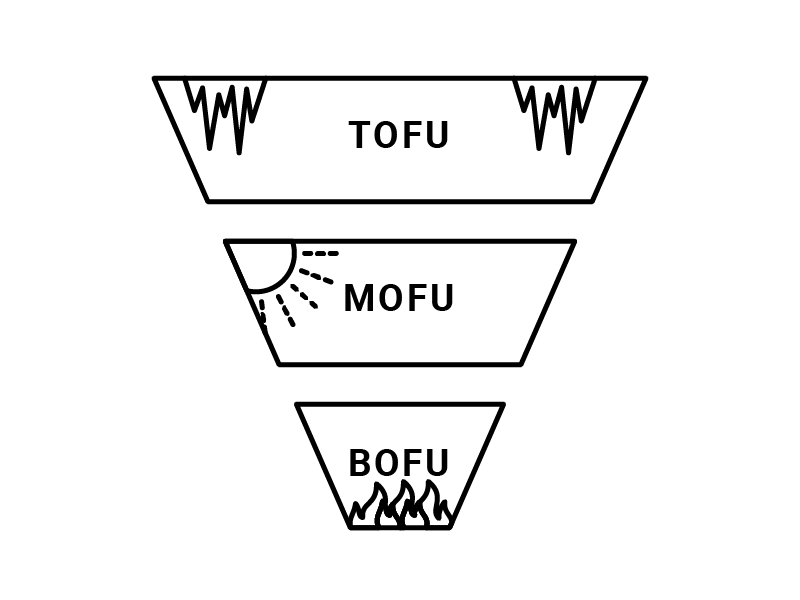
What is Customer Acquisition Cost in Marketing (CAC)?
Customer Acquisition Cost (CAC) is the total cost of sales and marketing efforts that are needed to acquire a customer (profitwell). CAC is calculated by dividing the total cost of acquiring customers (cost of sales and marketing) over a given time period by the total number of customers acquired over a that period of time. Successful SaaS companies keep their CAC below the lifetime value (LTV) of a customer.
How to Build a Top-Tier SaaS Marketing Strategy
Who is your Target Audience?
The first step in building a SaaS marketing strategy that lasts – one that works in perpetuity for you – is identifying your ideal end-user. Before they start creating content for their marketing strategies, successful SaaS companies know, through extensive research and deep inquiry, exactly who their target audience is and what questions they are asking. This is essential as it will inform your tone, voice, and the type of content you are producing.

When identifying your target audience, you want to go beyond just common demographics such as age, gender, and location. What are they interested in? What are they reading? Who do they follow on social media? What events do they attend? Most importantly, what is the problem they are trying to solve in their life? As a SaaS product, you must be able to identify those who are facing the problem your software service is solving.
You want to gather as much information as possible to determine where and how your end-user is spending their time. If this stage is misinterpreted, the entire customer journey is compromised as you will be presenting a solution to a group of people that simply don’t have the problem your solution solves.
Saas Marketing Strategy
The SaaS marketing funnel mirrors that of any successful marketing funnel: You must first attract potential users, convert them into a lead, convert those leads into product users and then carefully nurture users into monthly subscribers or ascend them from a lower tier to any number of upgrades. This process closely mirrors that of any good content marketing strategy.
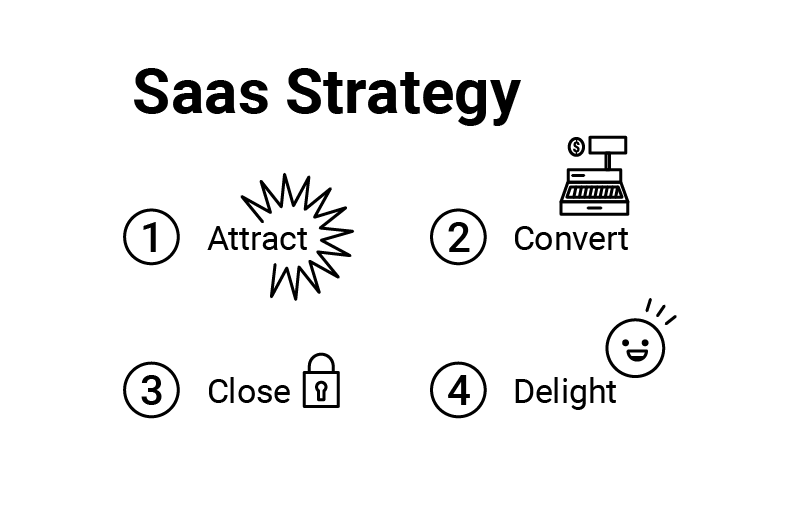
Content marketing exists in every phase of the customer acquisition journey, from attracting new prospective customers to driving sales and growing your client’s businesses. Content is your copy, it is your photo and video, it is your website, it is your social platforms. Content is everything. A successful content marketing strategy identifies the targeted demographic, considers who they are, what their interests are, and what they need, and then carefully delivers content assets to the end-user in a way that strategically ushers them from cold prospects to paying customers. Web Canopy provides the four stages of a traditional SaaS sales funnel:
- Attract – Use purposeful content to connect with buyers who have identified a challenge or a need for a new opportunity. With targeted content, you’ll attract potential buyers with a genuine interest in your services.
- Convert – Invite prospects to sign up for your freemium or trial program and continue nurturing them with valuable, targeted content.
- Close – Once they’re engaged, expand on building a relationship and trust until they’re ready to become a member of a premium tier of your SaaS program.
- Delight – We agree with HubSpot when they say happy customers are your greatest marketing opportunity! With excellent customer service, continued support, and helpful content, your customers will likely upgrade services and pass the word to others about the superior experience of working with you.
Let’s break this down into practical tactics.
Top of Funnel
Top of funnel assets are meant to generate awareness. Remember, those receiving these assets don’t know who you are yet. Your job here is to meet them where they are, providing them with valuable content that aligns with their interests, behaviors, and answers the questions they are asking. This is where you can start to prove you are a useful tool in your desired end user’s everyday life, by subtly highlighting how your SaaS product can address the issues they are facing.
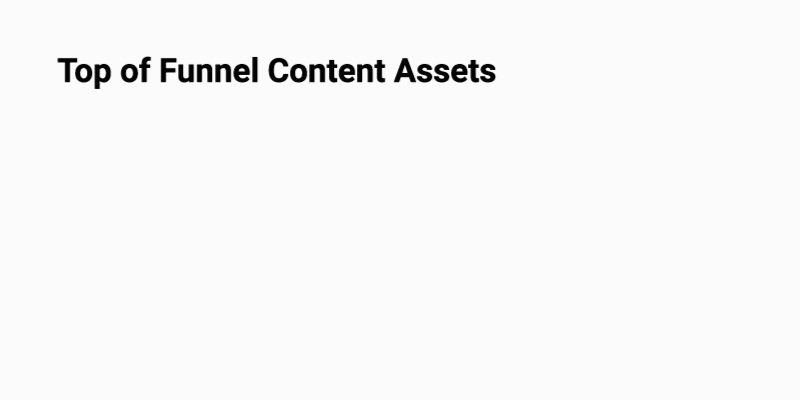
These assets should be completely free and un-gated, meaning they are readily available for prospects to consume. Below are some assets you can utilize in your top of funnel content marketing strategy.
- Blog Posts: Blogging is used to generate awareness, create buzz, and inform your clients’ prospective customers. Consistent blog posts provide users with helpful and insightful information.
- Copywriting: Copywriting plays a critical role in both paid advertising and organic media, all throughout the customer journey. How you are talking to different audience segments along the customer journey is where many organizations fall short, and end up losing current customers due to overstimulation or prospective customers due to overstepping boundaries.
- Videos/Photos: Video and photos have the unique ability to engage your audience no matter where they are in the consumer journey. A medium that can not only inform your audience but make them feel a certain way is a powerful tool to have in your digital marketing toolbox.
- Social Media Posts: Social Media Marketing exists throughout the entire journey. It utilizes advertising to acquire new fans, graphic design, video, and photo to nurture them, and branding to elevate them into a brand ambassador position. If you don’t have a presence on social media, with an effective strategy, you are leaving customers on the table.
- Infographics: These are great for giving quick and accessible facts to answer the top of mind questions consumers have. Graphic design acts as a visual translator between your business’ core values and your audience. Through clean, thought-provoking design, you can engage current customers and attract new ones.
Getting these assets in front of your desired target audience can be done in various ways:
- Paid media: Instagram advertising allows us to send content assets to cold audiences based on interests and behaviors. Paid media can be sent on social media platforms like Facebook, Instagram, and Pinterest, and the asset could be anything from a blog post to a meme and everything in between.
- SEO: Search engine optimization is incredibly important for meeting people in their exact moment of need. People use google every day searching for solutions, and if you can position yourself and your solution in front of them when they need you the most, you are setting yourself up for success.
- PPC: We can also use Pay-Per-Click advertising to get our assets in front of an audience based on key search words. This is typically done later on in the funnel, when end-users are warmer, and actively searching for a solution through Pay-Per-Click Ads.
- Organic Media: This is the media readily available to consumers. Common places for organic media are on webpages and social media platforms.
Middle of Funnel
In the middle of the funnel, the job of the content is to make end-users aware that there are options for them to consider that will fulfill their need or want. At this point, you are still providing them with valuable information, although you have migrated from entertaining them to educating them. At this stage, you have built up enough equity in the relationship to ask them for permission to talk to them one on one. This typically involves the end-user giving their email in exchange for a valuable piece of content that isn’t available to the general public.
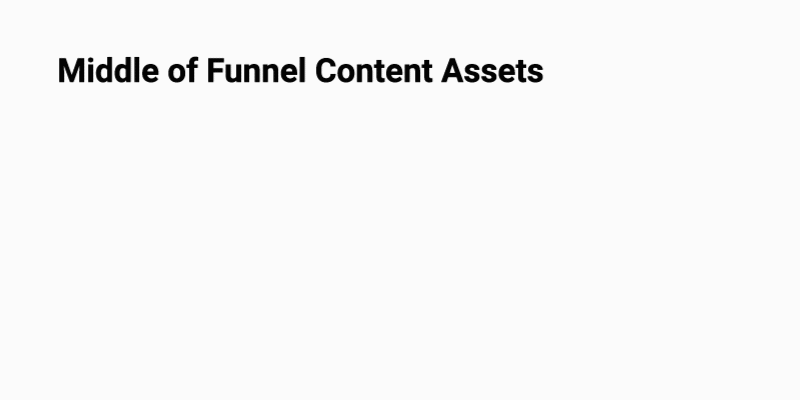
Types of middle of the funnel content assets include:
- Case Studies: As customers continue to educate themselves, case studies provide a source for the potential customer to ease their minds by seeing your product or service in action.
- Webinars: A webinar is a great way to generate trust in the relationship. Giving potential customers “exclusive” access encourages a sense of affiliation for the brand, and that they have access to something others don’t.
- White Papers: These are another source of educational information consumers can use to become more comfortable with the idea of making a purchase decision.
- Email Marketing: Email Marketing is implemented throughout the customer lifecycle to build and nourish current customer relationships.
We utilize re-marketing tactics to send more focused and direct content to those who showed an interest in the first level of content. This typically includes the use of paid media.
Bottom of Funnel
At the bottom of the funnel, we implement an integrated set of content assets in the form of paid media and organic media, all with the goal of ascending warmed up leads into paying customers. There will be those end-users that have finally found what they were looking for and move forward through the process rapidly, making a decision to purchase on their own. For those who need to be nourished into this decision, we can offer them less intimidating deals, that minimize the mental barriers to purchase.
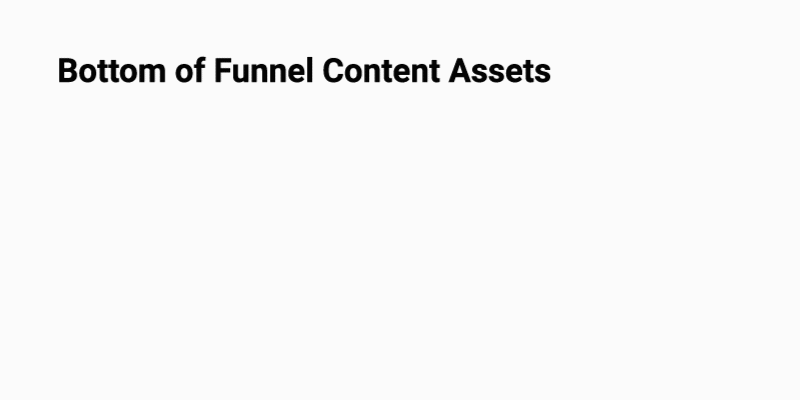
- Email marketing: Email Marketing has proven to be a consistent leader in eCommerce sales. Communicating offers with your potential customers through email is an effective way to present these types of sales.
- Customer Reviews: A fellow consumer will always be more trusted than corporate generated content.
Free Trials: The easiest way to eliminate risk in the consumer’s mind is to offer them a free trial. Most SaaS products operate under a “freemium” model that offers a free version of their software. This allows tentative purchasers enough time to use the product at no risk to them of financial loss. This is where ascension and retention become so important and where customer service and a superior product truly matter.
It Doesn’t Stop Here
Once a cold prospect becomes paying customers, you now have the critical task of elevating them to loyal supporters and super fans of your organization. First, for converting free users into monthly subscribers, and more importantly for the positive word of mouth they will generate. Content delivered to current and veteran customers should be centered around giving them ownership in the brand and creating affiliation. Types of content assets to use once a prospective customer has become a purchasing customer include:
- Recurring Content: Recurring content plays a critical role in keeping current customers engaged and excited about your brand. This could be a weekly live video, a weekly themed post, or a monthly newsletter.
- Email Marketing: Utilizing this one-to-one communication will allow you to stay top of mind, and help create the affiliation you are striving for.
- Social Media: Consumers love interacting on social media. It is important to be active and engaged with them, answering comments, messages, and mentions.
- User-Generated Content: Nothing makes a consumer feel more important than if their content is used by a brand they love. It also shows other potential consumers how other people are using your product.
When you think of your customers as actual people that you are trying to build a relationship with (rather than just a revenue stream), your marketing then becomes a way to get to know them. This is where you will find the right type of content to send to them. Not all companies have the capacity to create such robust content strategies, however, the path to becoming a purchaser remains the same. As long as you are able to provide content that removes barriers in the way of that path, you will have a successful and clear path to conversion.
Partnering with Sproutbox will not only ensure your content is of the highest quality but more importantly, that the right type of content is being delivered to the right person at the appropriate time along the customer journey.
